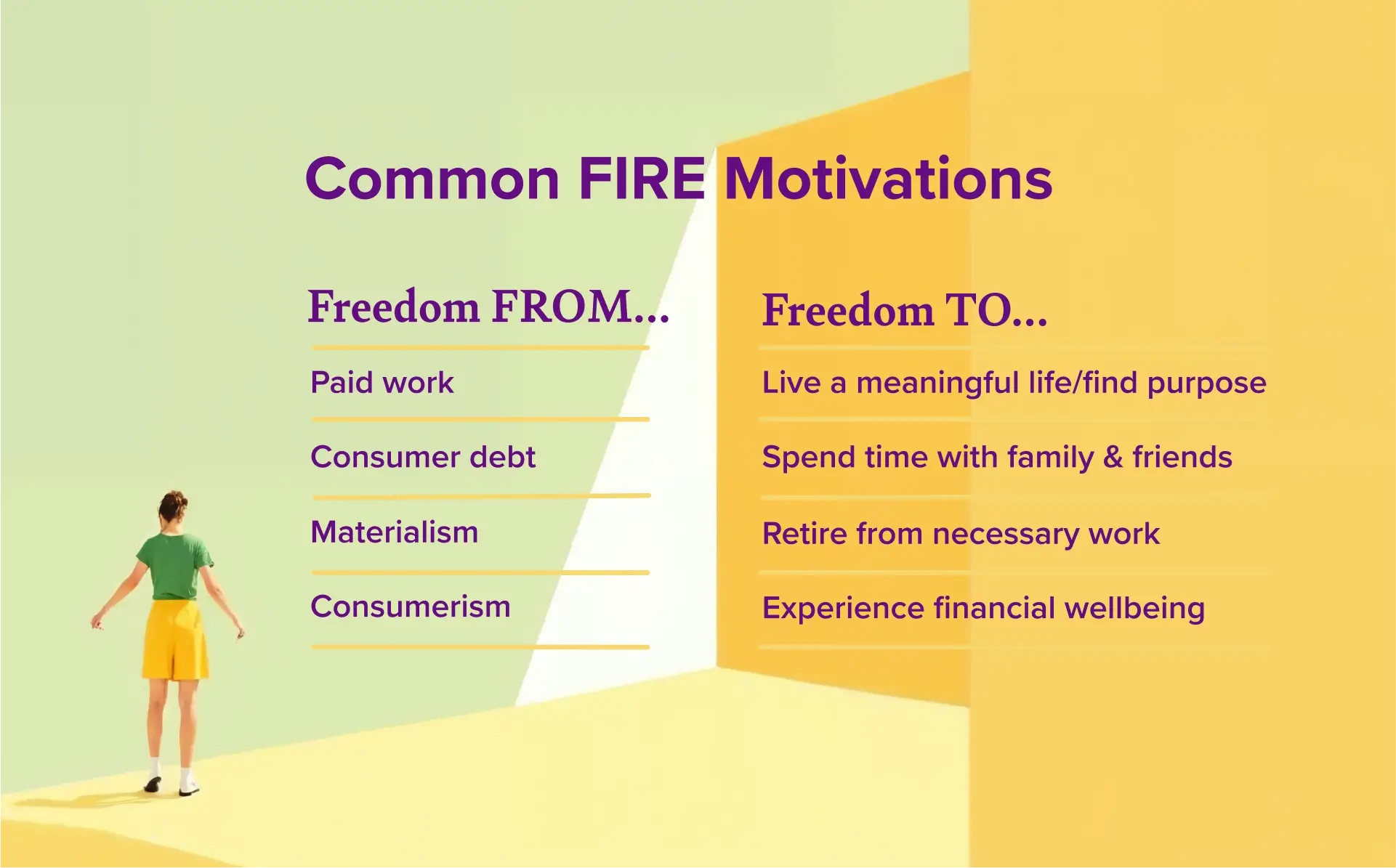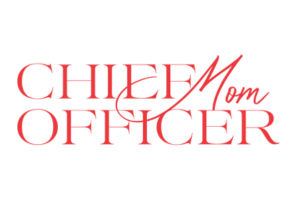
We’re all familiar with the ‘rat race’. Getting up each day, spending many of the daylight hours ‘working for the man’, and doing so over and over again until we retire in our sixties — and let’s face it, many people are even working into their seventies. But what if that didn’t have to be your reality? What if you could retire in your forties, or even earlier, and enjoy all that the world has to offer while you’re still young and fit? Well, some people are doing exactly this. And no, they’re not the billionaires or the ones born into generational wealth. They’re normal working people pursuing the FIRE movement. Curious? Let’s dive in.
FIRE stands for Financial Independence, Retire Early. The aim of FIRE is to effectively condense down your working life into a short period of ten or twenty years, with the intention of saving and investing a large proportion of your income.
The idea of FIRE is that you amass enough assets to be able to produce a passive income that covers your living expenses without you having to work. Some people choose to retire completely and never work again. Others choose to become ‘work optional’. This means that they may work on projects or jobs that particularly interest them, but they’re not required to work to be able to pay their bills.
Hooked already? Understandable. The idea of not having to answer to anyone and choosing whether or not to work based solely on whether you want to sounds like the dream. But FIRE requires a lot of sacrifice before you get to sail off into the sunset (maybe even literally) and enjoy the good bit.
At its core, the FIRE philosophy comes down to three key components:
If you’re considering pursuing FIRE, you might find it helpful to explore your own relationship to freedom. What do you want freedom from? What do you want freedom to do?
FIRE isn’t one size fits all. We all have different goals for our lives and different ideas of what freedom means to us. If you see your retirement filled with champagne and yachts, you’re going to need to approach FIRE differently to someone who wants to live a simple life on a farm growing their own lettuce. Luckily, whatever your goals, there’s a FIRE for that! Here are a few different subtypes of FIRE.
Lean FIRE is all retiring to a simple life. Lean FIRE followers want to achieve retirement without the bells and whistles. Not only will they get there by living with less than the average person, but they’ll continue to do so after they clock out of the rat race. Lean FIRE is attractive to people who don’t have particularly high incomes, but still want to pursue a life of freedom from the grind. With Lean FIRE you might withdraw a much smaller annual income, and have much lower living expenses in retirement.
Fat FIRE is the opposite of lean FIRE. Fat FIRE followers look forward to a lavish lifestyle in retirement, filled with travel, dining out and other luxuries. Fat FIRE is often used to describe people planning to draw down a six-figure income for their retirement.
Barista FIRE involves pursuing somewhat of a semi-FIRE approach, where you plan to support your retirement years with a part time job. Barista FIRE followers strive to have enough passive income to support their key expenses, but may fund other aspects of their lifestyle with income from a casual job — hence the name barista! These jobs aren’t careers or high-stress corporate roles. Instead, they’re more entry-level, procedural jobs with less at stake.
Coast FIRE is all about how you live on your way to retirement. Rather than living extremely frugally until you retire, Coast FIRE involves saving aggressively during your early working years to amass a large amount of savings and investments as early as possible. Then, slowing down your frugality and lifestyle sacrifices as you approach retirement. This strategy works by leveraging the power of compound interest. The longer you’re invested, the more time your money has to make money. So, rather than moving at the same pace toward retirement, albeit early retirement, you’re stacking more of your input upfront, and slowing down to allow for a less frugal lifestyle once the foundations are laid.

Personal finance is personal — and FIRE isn’t for everyone. Here are some of the upsides and downsides to consider.
FIRE is as much about mindset as it is about numbers. While there is a strong focus on minimizing spending and stashing money into investments, the pursuit of FIRE requires a significant mindset shift in order to stay the course and embrace the lifestyle.
Pursuing FIRE is a long-term decision, and not only do you need to calibrate your mindset to the lifestyle you’ll live before you retire, you need to be prepared for how your life will change when you are able to retire. Sure, we’d all love to have more freedom. But when you’re actually in a position that most people will never find themselves in, without the routine of going to work everyday because you have to, it can feel somewhat isolating.
Here are some key aspects of the FIRE mindset to consider.
FIRE shares many similarities with the minimalism movement. Pursuing FIRE means making a choice to withdraw from a lot of the consumption that has become normalized in our daily lives. The way we spend has drastically changed in recent years. We have material goods at our fingertips, there’s a solution for every single problem, and just about anything can be delivered to our door whenever we want it. Generally, choosing to pursue FIRE means letting go of these luxuries and living a much simpler life, and you may begin living a life that’s different to those around you. Friends may go on expensive holidays, have nicely decorated homes, drive nice cars or buy material things like clothes, games and toys, while you’re borrowing books from the library and using the same cooking pans you’ve had since you were 21. Getting into the anti-consumption mindset can take time, but you will likely find a new appreciation for the smaller things in life.
It’s no secret that FIRE requires a lot of sacrifice — and that sacrifice has to be worth it. You need a clear idea of why you want to pursue FIRE, what it is that you value about the pursuit of financial freedom, and why that outcome is worth giving up so many things in your life now. You need to be able to forge a very deep connection to the life you want to create for yourself in order to live the life that FIRE requires. It won’t be easy to give up expensive conveniences if you’re not totally sure what you’re doing it all for.
Delayed gratification is difficult for the human brain. Some of us are better at it than others, but the bottom line is: We’re just not wired to wait for things we want. FIRE is one of the greatest acts of delaying gratification, and it is possible to train your brain to resist financial impulses and set the majority of your money aside for the future. It just takes practice. Studies have shown that delayed gratification is something that can be learned by repeating behaviors over and over again until they become easier. So, while FIRE behaviors might feel hard at first, eventually it can become second nature. It’s this new normal that will help your mindset calibrate to your goal of FIRE.
Literature and research has long explored the significance of freedom in the context of personal finance, and sought to understand what motivates people to pursue ‘financial freedom’. Despite freedom being a singular pursuit, researchers have actually uncovered a two-sided view of freedom in the minds of those who pursue FIRE. These two sides represent the freedom from certain aspects of life, and the freedom to engage in different aspects of life.
Commonly cited motivations for pursuing FIRE using the from/to framework:

If you’re considering pursuing FIRE, you might find it helpful to explore your own relationship to freedom. What do you want freedom from? What do you want freedom to do? These overarching themes unite many people’s motivations, but breaking down what they mean for you personally can help you flesh out your FIRE vision more clearly.
Emma and Julia are colleagues. They both say they’d love to not have to work and be able to enjoy a sense of freedom. Emma’s idea of freedom is traveling the world in a renovated van, never staying in one place too long, and ticking off her bucket list. Julia’s idea of freedom is being able to run her own farm and flower shop and spend more time with her young family without having to work a 9-5 job. Freedom is not one size fits all, and your journey to achieving it shouldn’t be either.
Anyone can choose to pursue FIRE, but there are a few factors that make for an ideal FIRE candidate.
Tempted to pursue your own journey to financial freedom? Already visualizing your dream #vanlife travelling the world, or your simple mornings drinking coffee on your deck looking over the ocean? Here’s how to get started.
This is the most important step in getting started with FIRE. Your FIRE number is essentially the amount you need to have invested to be able to draw down an income that covers your expenses.
The standard FIRE calculation is annual expenses x 25.
If you want to spend $50,000 per year in retirement, you’d need to have $1,250,000 invested. This is based on the idea that you can withdraw 4% of your total portfolio each year without running out of money.
Bear in mind your expenses may or may not include housing costs, depending on whether you plan to rent, travel, or own your home outright.
Earlier on, we told you about some different types of FIRE (lean, fat, coast and barista). Some of these different approaches to FIRE will change your FIRE number.
Got your FIRE number? Now let’s get started on this whole FIRE journey! It’s time to start slashing expenses, maximizing that income, and deciding what you’ll invest in to grow your wealth.
Sit down with your income and expenses, and take a long look at the life you’re currently living, and what you can change to get closer to your FIRE goal. That might mean moving to a lower cost of living area, taking on extra work, starting a side hustle, or changing careers completely. You might move back in with your parents, or even try long term house sitting to keep your costs down.
An important part of FIRE is keeping a watchful eye over where your money goes, and how your net worth is progressing — and luckily we know a rad little software that’s *chefs kiss* perfect for your FIRE journey.
Oh wait, it’s us! PocketSmith’s features give you the hands on control over your finances that you need to pursue FIRE successfully, allowing you to track every single dollar, set up budgets and measure your real time spending against them, and even use forecasts to project your future financial growth using real data from your money behaviors.
 In case you couldn’t tell, we’re big fans of FIRE as a financial independence movement. We’ve shaved off half a point for the fact it’s such a big endeavor that simply isn’t for everyone, and generally, succeeding at FIRE does require you to have a pretty good run of luck on your journey to getting there. However, even if you don’t pursue FIRE perfectly, there’s a lot you can implement from the movement as a whole.
In case you couldn’t tell, we’re big fans of FIRE as a financial independence movement. We’ve shaved off half a point for the fact it’s such a big endeavor that simply isn’t for everyone, and generally, succeeding at FIRE does require you to have a pretty good run of luck on your journey to getting there. However, even if you don’t pursue FIRE perfectly, there’s a lot you can implement from the movement as a whole.
Check out some popular online FIRE bloggers who are pursuing FIRE themselves to get inspiration for your own journey.


